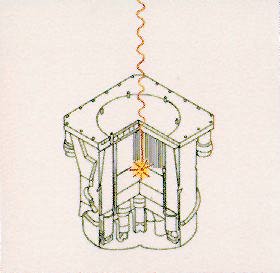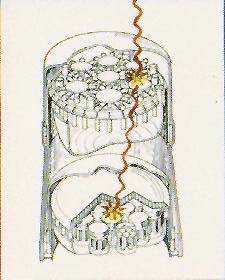
OSSE provides sensitive spectral measurements of individual gamma-ray point sources.
OSSE - Complementing BATSE is the Oriented Scintillator Spectrometer Experiment (OSSE) which provides the capability of detecting sources in the band from 50 keV to about 10 MeV. OSSE is composed of four independent modules, each a collimated scintillator. Collimation refers to the practice of placing a baffle on the detector to reduce the field-of-view.
This allows the detector to concentrate on a single source. The independent modules of OSSE can also view a background region simultaneously for comparison with the source region. This comparison allows OSSE to detect sources which are much weaker than those routinely observable with BATSE. In addition, OSSE provides very good spectral capabilities over its entire energy range. This allows for sensitive searches for features which are important diagnostics of source environments. These spectral features are the primary science objectives for OSSE. There are many types of features OSSE can look for. Gamma-ray lines, which are enhancements in the numbers of photons detected around some characteristic energy,
